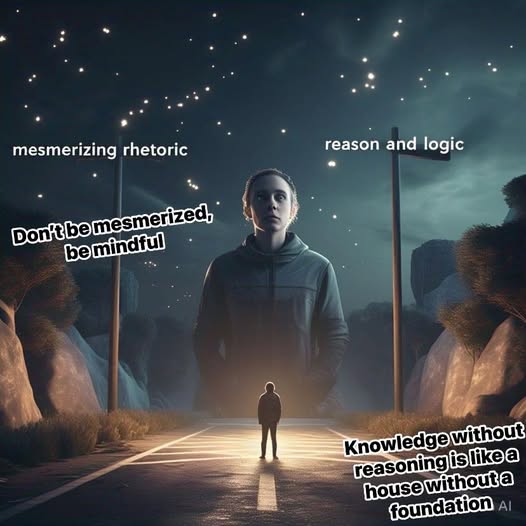
Kavi observed a troubling pattern in human thinking—people often accepted information at face value, mesmerized by how it was presented rather than questioning its foundation. He noticed that millions believed conspiracy theories, false political claims, or ideological narratives simply because they had never been taught how to critically evaluate knowledge.
The Pattern of Unquestioned Beliefs
Observation:
Kavi realized that the problem was not just a lack of critical thinking but a deeper issue—people were never taught how knowledge is developed. In schools, children learned subjects like math, science, and history, but they were never taught the methodology behind acquiring knowledge. They absorbed information but never questioned why it existed, how it was formed, or whether it was based on sound reasoning.
This pattern was visible everywhere:
- People blindly accepted misinformation without analyzing the reasoning behind it.
- Political leaders and religious figures used emotional rhetoric to mesmerize the masses.
- Societies focused on the outward structure of beliefs rather than their foundational validity.
Kavi compared this to an ornate building with no solid foundation—it looked impressive, but the moment one examined its base, it crumbled.
The Cycle of Unquestioned Beliefs
- Mesmerizing Presentation – A belief, ideology, or claim is presented in a compelling way, drawing people in.
- Unquestioning Acceptance – People absorb the belief without scrutinizing its basis, trusting its source blindly.
- Emotional Reinforcement – The belief is strengthened by groupthink, social influence, and emotional appeal.
- Resistance to Scrutiny – When challenged, believers defend their stance not with reasoning, but with emotion or deflection.
- Collapse of Rational Discourse – Without a foundation in reason, societies struggle to separate truth from falsehood.
Kavi’s Solution: The Knowledge Scrutiny Framework
To break this cycle, Kavi proposed a structured approach to evaluating any knowledge or claim:
- Resist the Mesmerizing Effect – Don’t be swayed by how information is presented; focus on its substance.
- Question the Rationale – Ask: Why does this knowledge exist? What reasons support it?
- Identify the Four Sources of Reasoning:
- Observation – Is there direct, verifiable evidence?
- Experience – Has this been tested and confirmed in reality?
- Historical Accounts – Is it based on collective human experiences?
- Rational Deduction – Does it logically follow from known facts?
Impact of Kavi’s Teachings
Kavi began teaching children and adults alike how to scrutinize knowledge. Over time, people started questioning misleading claims, seeking evidence, and resisting the pull of emotional persuasion. Leaders who relied on rhetoric without reasoning lost their influence, and societies became more grounded in truth.
As Kavi’s teachings spread, the world witnessed a shift—from blind acceptance to thoughtful inquiry, from confusion to clarity.

